The year 2025 marks the 40th anniversary of Dr Reiner Knizia’s career as a board game designer – his first published game, Complica, was released in a magazine in 1985 (although he’d self-published games before then as well).
Since then, Knizia has designed and published over 800 games and expansions, many of which are critically acclaimed. Put simply, Reiner Knizia is the landscape on which all other modern designers build their houses.
To celebrate Knizia’s career and back catalogue, Meeple Mountain are taking things back to basics to consider the ABC of Reiner Knizia: one game for each of the 26 letters of the alphabet.
This time: The Letter ‘I’.
I – Ingenious (2004)
Knizia has spoken about how he starts designing a game and that he resists trying to find a formula to repeat each time. “Innovation does not spark when you always start from the same point and then follow a fixed methodology of how to progress.” he said in an interview with OnTableTop. “Trampling along the same path with each design is unlikely to lead you to something groundbreakingly new. I have learned to look for ever new entry points of innovation.”
It’s why, despite being a doctor of mathematics, his designs rarely start with maths. “The psychologist Watzlawick once said that if all you have is a hammer, everything in the world will soon look like a nail. I am a mathematician, but I believe that any attempt to calculate fun into my game designs would set me up for failure.”
Many people feel (often incorrectly, see Letters ‘E’ and ‘H’) that Knizia designs are abstract games with a theme lightly pasted on. Ingenious, though, is what happens when the good doctor goes full abstract.
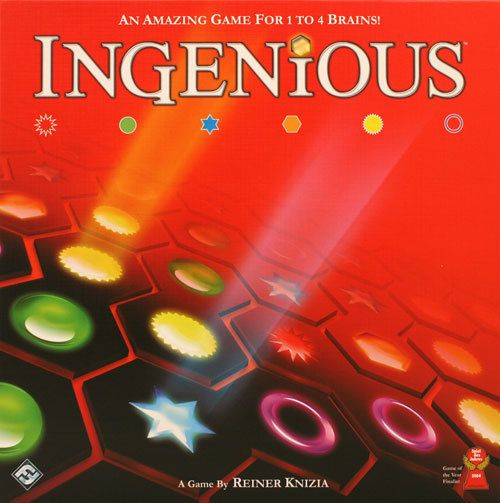
“Ingenious started as a brief: can we make an abstract maths game that’s popular?” he said at an Origins panel back in 2008. From there he wanted to make a game where players tried to score coloured lines before incorporating the scoring system he’d designed previously with Tigris & Euphrates. “This forces balance,” he said during the panel, “which introduces tension into the game.” It ended up being a quick game to design, taking him around 3 months.
Yet despite its rapid development time, Ingenious is a design that doesn’t feel rushed. It’s the epitome of the tabletop cliché: easy to learn but difficult to master. Players place hexagonal domino pieces with coloured shapes on them on a central board, getting colour points for lines of matching colours/shapes. The winner is decided based on the colour score each player has the least amount of points in.
It’s safe to say we’re Ingenious fans here at Meeple Mountain. “It’s a wonderful work of ingenuity,” Ashley Gariepy says in her review of Ingenious, “somehow Knizia always manages to create abstract games with very simple rules and mechanisms and yet they manage to still have so much depth.” And whilst Tom Franklin wasn’t wowed by the production in his review of Ingenious Second Edition, he’s in the same camp as Ashley when it comes to the gameplay: “I love Ingenious. For me, it is THE gold standard by which I judge all other abstract games that claim to scale beyond two (players).”
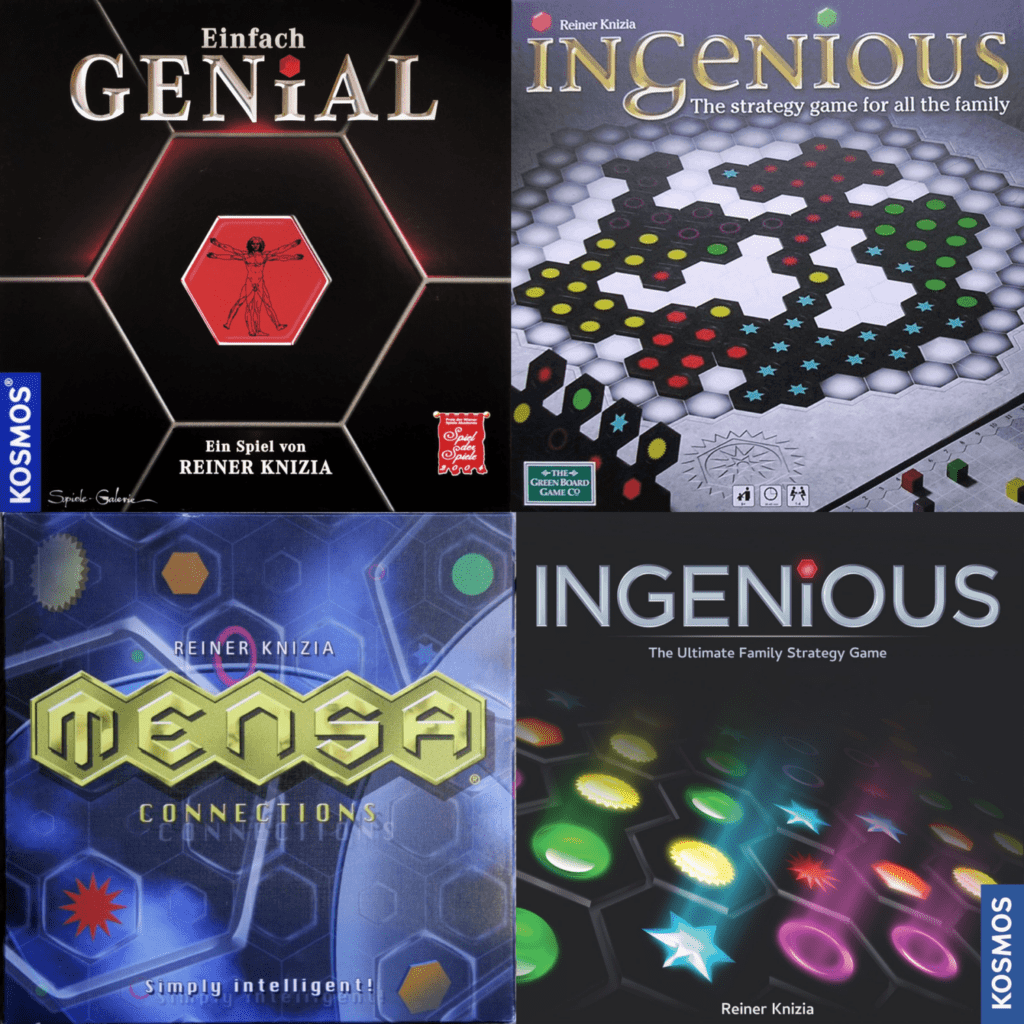
Of course, we aren’t the only ones who enjoy Ingenious. Nominated for the Spiel des Jahres in 2004 (missing out to Ticket to Ride), it won a number of national awards including Austria’s Game of Games, Brazil’s JoTa, Japan’s Boardgame Prize and Switzerland’s Schweizer Spielepreis. It also was a Mensa Select winner in 2005 and won the Golden Geek Best Family Board Game in 2006.
Yet it hasn’t all been plain sailing and you may have encountered a similar design using squares instead of hexagons under the guise of Axio.
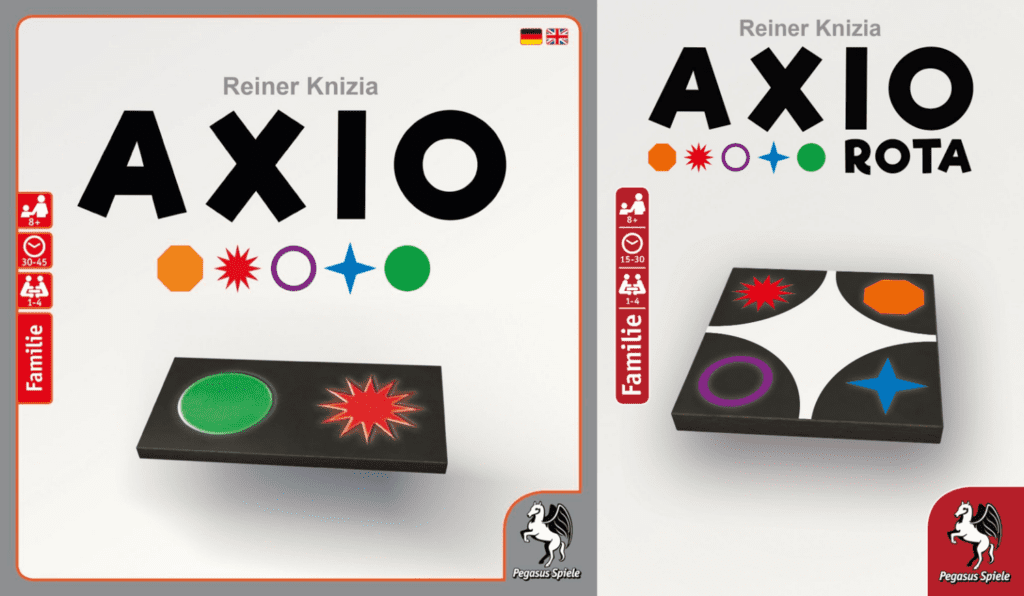
The advent of Axio stems from a trademark conflict between Knizia and publisher Sophisticated Games. You can read views from both sides here, but it seems in trying to protect the game from being copied, Sophisticated Games had trademarked the name ‘Ingenious’. Knizia took issue with this, feeling put out that he’d have to pay royalties to use the name for his own game and its subsequent spinoffs. Whilst a disagreement between publisher and designer with a strong track-record of working together can only be seen as unfortunate, we can’t help but be amused that in his communications the managing director of Sophisticated Games, Robert Hyde, repeatedly refers to Dr. Knizia as ‘Mr’ Knizia.
Trademark disputes aside, the Ingenious family has grown over the years, with predictable spin-offs including a two-player travel edition, a penguin-themed children’s edition and card and dice versions. Slightly less predictable is the push-your-luck game (Simply Ingenious), a tower connection game (Genial Spezial – the origin of 2024’s Cascadero), the octagon-based Ingenious Extreme, and a racing puzzle game (Einfach Genial Knobelspass). And while Axio had a troubled origin, its multi-scoring pyramids push it ahead of the original Ingenious for some folks, and it has its own spin-off in the form of circle-creating Axio Rota.
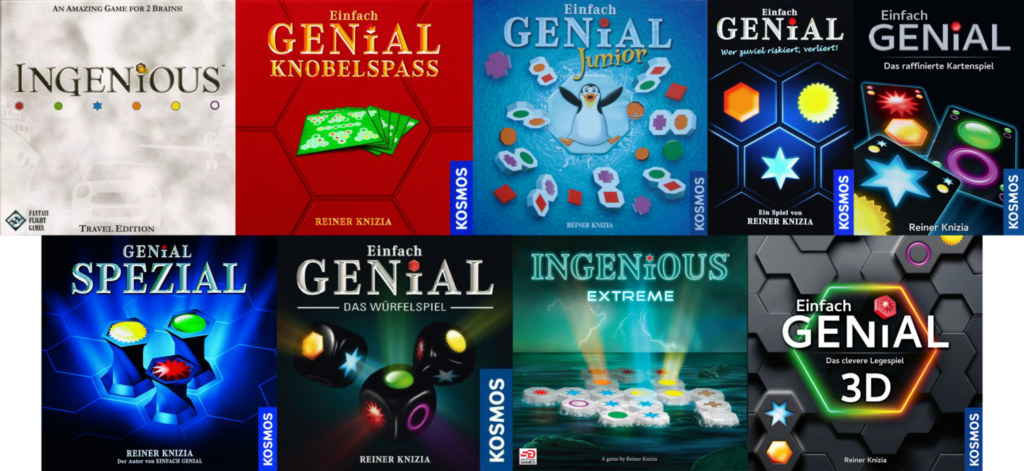
The Ingenious line is still going strong, 20 years after it first appeared on the scene. Last year’s Einfach Genial 3D presented a new challenge with players building upwards in a tighter and more interactive space. “It doesn’t replace Ingenious so much as it augments the best parts of the original and creates a familiar-yet-different version with its own unique strategies,” said Franklin in his review of Einfach Genial 3D, “I cannot recommend Einfach Genial 3D enough. It really is that good.”
We’re looking forward to whatever the good doctor decides to do next with his little abstract maths game that could!
Intrigued by Impressive I’s?
If you’re interested in Knizia’s ‘I’ inventory then, whilst there aren’t innumerable games, there are increasing numbers with the incoming two-player abstracts Ichor and Iliad. In the meantime, I’s worthy of inspection include:
Ice Tumble – A family-level stacking game, 2020’s Ice Tumble sees players claiming ice blocks in the first half of the game and then trying to stack them successfully in the second half. The winner is the first player to get rid of all their blocks by stacking them or giving them to an opponent. With a healthy dose of luck and take-that from the die it isn’t for everyone, but if you’ve got kids aged 5 years and up then it’s worth a look.

Ilium – One of Knizia’s more hidden gems, 2008’s Ilium is a fine game of area control and set collection, with a couple of excellent little twists thrown in when it comes to winning artifacts for those sets. Players take on the role of archaeologists excavating the site of ancient Troy but when controlling a dig site they must select the weakest available artifact and when the game ends must give their most valuable artifact to their benefactor. Of all the games we’ve covered in this Knizia alphabet, Ilium is a strong contender for the title of ‘most in need of a revisit’.
Indigo – Re-released this year as Butterfly Garden, 2012’s Indigo is, according to Meeple Mountain’s Tom Franklin, “a hexagonal version of Tsuro” and was a Spiel des Jahres recommendation on its release. “On each turn you add a pathway piece to the board,” says Franklin, “and move your player token across that path as far as it will take you. Your goal is to reach one of the six corners of the larger hexagon to claim points.” The recent retheme swaps the abstract gemstones and soothing blues for butterflies fluttering chaotically towards flowerbeds.

Into the Blue – Push-your-luck dice games are rarely lookers but 2021’s Into the Blue bucks this trend, with killer production values by publisher Funnyfox. There’s nothing deep about this area control game of chance but it has its fans, including BoardGameGeek’s Eric Martin who called it a “fantastic little design”. Our own Andy Matthews gave more of a shrug, recommending in his review of Into the Blue that you try it, but with someone else’s copy.
–
And so our investigation of ‘I’ ends. Did our incomparable decisions make you incandescent and intoxicated or did we indecently insult your intelligence and you imagine you could improve? What ‘I’ game would you have chosen? Let us know in the comments below and check out the rest of the Reiner Knizia Alphabet here!


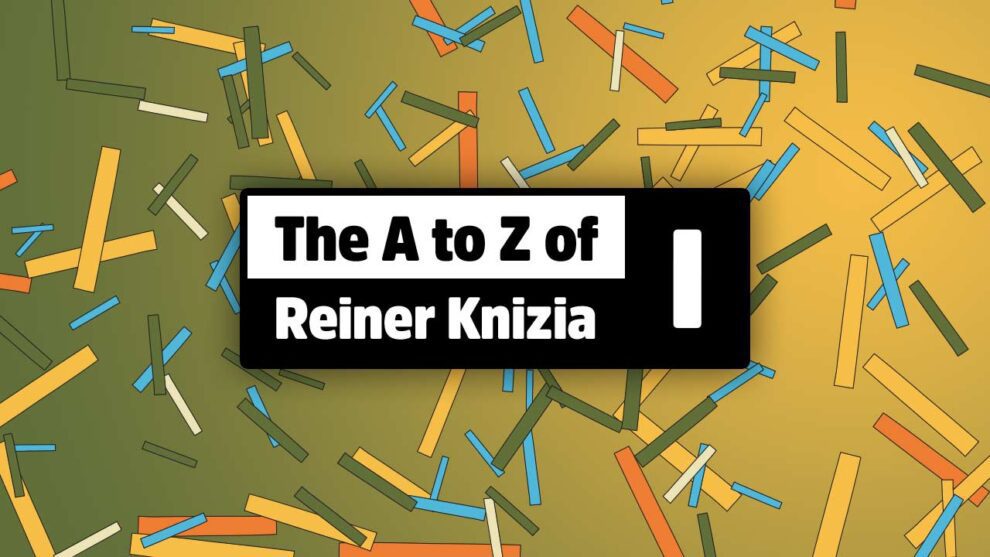


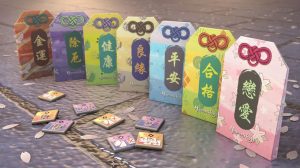

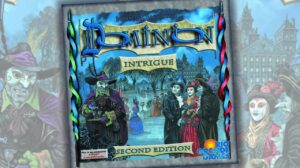



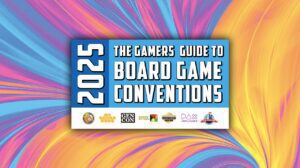

Add Comment